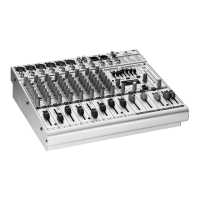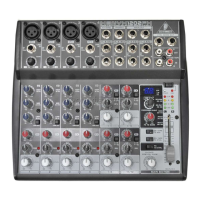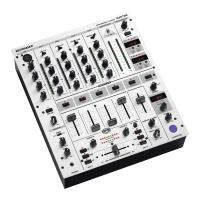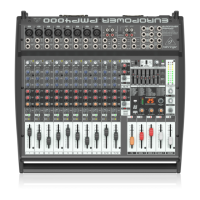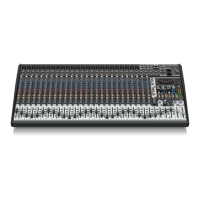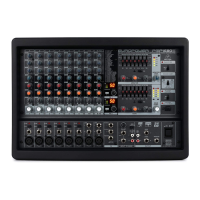Quick Start Guide 11
Channel Strip Section
The channel strip provides quick access to the primary parameters for the
currently-selected channel. A display screen provides dedicated editing details for
the parameter being adjusted, and various indications for input conguration,
bus and group assignments, and metering are always visible for convenience.
One of 7 channel editing blocks (including EQ) can be sent to the editing display
screen by pressing the associated button or touching the capacitive encoder knob
directly above. Press and hold the button to turn the block on or o.
Pressing the VIEW button will open the HOME screen of the selected channel
on the Main Display.
Once a block is already active, pressing the block button again will scroll through
several parameters for editing, and the associated encoder can be used for
adjustments. Small dots in the lower right corner of the display indicate how
many parameters can be scrolled through by repeatedly pressing the block button.
An additional EQ section has dedicated controls for adjustment of up to 6 EQ
bands for input channels and 8 bands for buses. Engage the EQ block by pressing
and holding the EQ button, then touch one of the 4 EQ encoder knobs to select a
band for adjustment. Press the SHIFT button to access the low and hi shelf bands,
and additional bands if editing a bus EQ.
The GAIN, WIDTH and FREQ buttons select which element of the current band will
be adjusted with the encoder.
Press the LISTEN button in the lower right corner to monitor the EQ band in
isolation. The BLEND/MIX knob acts as a wet/dry adjustment for the EQ block.
This can be used to exaggerate or de-emphasize the current EQ setting.
4-Channel Section
The edit section above the righthand fader bank oers a special set of dedicated
control elements. This can be parameters like gain, pan, lters or eects sends for
the selected bank of 4 channels.
Pressing one of the 8 buttons enables the 4 knobs and 4 buttons to control
channel properties without actually selecting the channel for editing. This makes
the 4-channel section independent from the main control surface, and would
allow for a second audio engineer to work in parallel to the FOH engineer.
Custom Controls
The Custom Controls section allows up to 4 rotary knobs and 8 buttons to be
congured for control of specic elements that should be available at all times
regardless of the main display screen focus. A common use could be the vocal
channel’s reverb send level. Presets can also be congured to suit dierent sets,
venues, operators, etc. Press the VIEW button to assign functions to the controls,
optimize the scribble strips, or reset the controls.
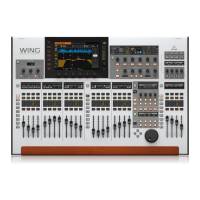
